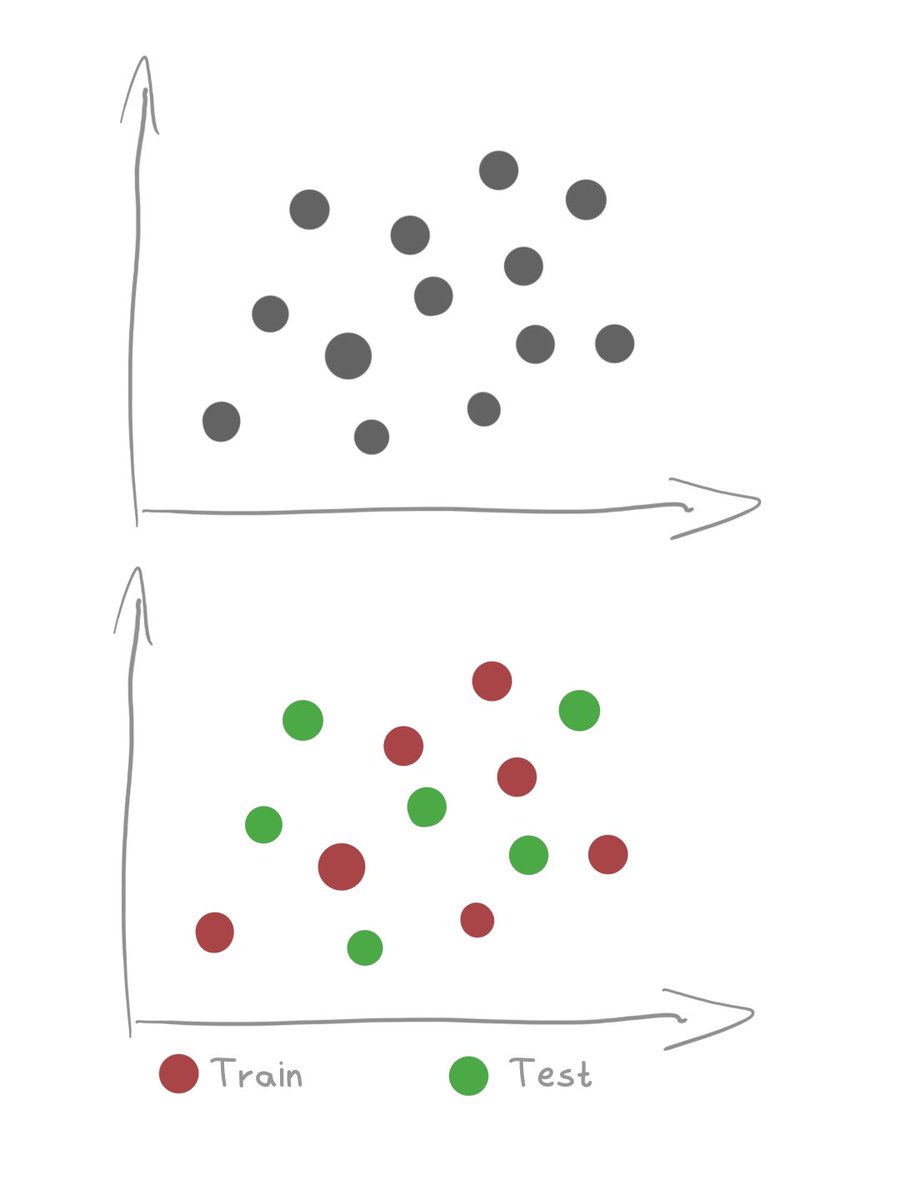Don't fall victim to the Texas Sharpshooter Fallacy!
Are you aiming for data-driven insights or just shooting in the dark?
Learn how to avoid cherry-picking data and arrive at more accurate conclusions.
1/9
Are you aiming for data-driven insights or just shooting in the dark?
Learn how to avoid cherry-picking data and arrive at more accurate conclusions.
1/9

What is the Texas Sharpshooter Fallacy?
It comes from the idea of a sharpshooter who fires a gun at a barn and then paints a target around the bullet holes, making it look like they hit the bullseye.
How is it present in data science?
2/9
It comes from the idea of a sharpshooter who fires a gun at a barn and then paints a target around the bullet holes, making it look like they hit the bullseye.
How is it present in data science?
2/9
Consider this:
A medical team want to prove that they "hit the bullseye" with a medical treatment.
They only look at patients who have responded well to the treatment, without considering those who did not respond well.
This leads to biased conclusion.
3/9
A medical team want to prove that they "hit the bullseye" with a medical treatment.
They only look at patients who have responded well to the treatment, without considering those who did not respond well.
This leads to biased conclusion.
3/9
First the team shot, then wanted to prove to be correct.
First they had the result in mind and then found data to prove it.
This is cherry-picking data that supports a particular hypothesis.
4/9
First they had the result in mind and then found data to prove it.
This is cherry-picking data that supports a particular hypothesis.
4/9
You can easily make this mistake if you look for patterns in data without first formulating a hypothesis.
This fallacy is similar to confirmation bias:
One seeks out information that confirms the pre-existing beliefs.
What else can cause this trap?
5/9
This fallacy is similar to confirmation bias:
One seeks out information that confirms the pre-existing beliefs.
What else can cause this trap?
5/9
- Lack of statistical significance:
Even if a pattern is present in the data, it may not be statistically significant.
- Small sample sizes:
This can increase the risk of cherry-picking data.
How to avoid the fallacy then?
6/9
Even if a pattern is present in the data, it may not be statistically significant.
- Small sample sizes:
This can increase the risk of cherry-picking data.
How to avoid the fallacy then?
6/9
The fallacy involves cherry-picking data that supports a particular hypothesis, without considering all data.
So do this:
- Formulate a clear hypothesis
- Consider all of the data
- Use appropriate statistical methods
- Approach data analysis with a skeptical mindset
7/9
So do this:
- Formulate a clear hypothesis
- Consider all of the data
- Use appropriate statistical methods
- Approach data analysis with a skeptical mindset
7/9
That's it for today.
I hope you've found this thread helpful.
Like/Retweet the first tweet below for support and follow @levikul09 for more Data Science threads.
Thanks 😉
8/9
I hope you've found this thread helpful.
Like/Retweet the first tweet below for support and follow @levikul09 for more Data Science threads.
Thanks 😉
8/9
https://twitter.com/levikul09/status/1645354692753641472
You should also join our newsletter, DSBoost.
We share:
• Interviews
• Podcast notes
• Learning resources
• Interesting collections of content
dsboost.substack.com
9/9
We share:
• Interviews
• Podcast notes
• Learning resources
• Interesting collections of content
dsboost.substack.com
9/9
• • •
Missing some Tweet in this thread? You can try to
force a refresh

 Read on Twitter
Read on Twitter













